Last time, I left you with the mating dance of the cute, clumsy blue-footed booby, which we witnessed while hiking on San Cristobal Island. If you are just joining us, check out the first two parts of my Galapagos series. That afternoon, the more confident swimmers snorkeled in a somewhat rough area around a rock formation. We frolicked with two Galapagos Sea Lions in the water, saw a pufferfish, two sharks, and a gazillion of the usual type fish. Then, we took the Panga boats to Cerro Brujo, which translates to “Witch/Wizard Hill.” This was another of the most beautiful beaches I’d ever seen! The white sand stretched on for miles, as far as the eye could see, their crescents broken only by piles of black lava rocks. We strolled the beach, avoiding the lounging sea lions and frightening skittering red rock crabs into their hidey-holes. The Sea Lions lounged around, occasionally hauling their rotund bodies up to lumber a few feet then plop back down, grunting and groaning like old men. The short waddle seemed to cost them greatly, exhausting them and eliciting much annoyance. We watched two babies nursing one momma. Another tried to scoot in and grab a nipple, but was denied with a bark and a slap. Other adults sprawled out in the sand, looking so peaceful and blissed out, an occasional flipper swatting a fly. The lava rocks were home to varieties of wildlife, from inhabitants of the tidal pools to colorful Sallies. The iguanas here were nearly solid black, blending in seamlessly with the rocks. Yellow warblers flitted about in stark contrast to the black. We watched the sunset over Kicker Rock as frigate birds circled ominously overhead, then had another lovely dinner followed by an early night.
Santa Cruz
Santa Cruz is the second largest of the Galápagos Islands (Isabela is the largest) and is the most inhabited. If you do a land-based tour, you’ll likely spend at least a few days here, probably in the large port town of Puerto Ayora. The town is quaint and has several nice hotels, hostels, restaurants, and shops. It is also home to the Charles Darwin Research Center where you can learn about the islands in general and tortoises in particular. If you are staying here, check out this website for lots of info on what to see and do. The tortoise breeding center is a beautiful conservation effort. You can see tortoises in all stages of development and learn about how different species are being saved and/or brought back from the brink of extinction. Not only can you see live saddleback tortoises, but you can see Lonesome George himself in his taxidermied form. He was the last of his kind, a Pinta Island Tortoise. There are 15 species of Galapagos tortoise, 2 of which are extinct. Tortoises inhabit 7 of the 13 major Galápagos Islands. Do you know the difference between turtles and tortoises? I did not… tortoises are land-dwellers and turtles are primarily aquatic. There are 4 types of turtles in the Galapagos- the Green Sea Turtle is the most commonly seen and is the only one to nest in the islands. The island is actually named after tortoises! The Spanish word Galapago translates to “tortoise” or “saddle.” The Darwin Research Center has an awesome gift shop, by the way. We bought some safari-type button down shirts, which are great! Lightweight, with lots of ventilation and long sleeves. Proceeds go to the center, which I can definitely support! A note about shops- We walked from the Darwin center to town. We made the mistake of stopping at the first few shops and buying our souvenirs there. Keep walking- the best shops in town are closer to the pier. One of our favorites was Patas Azules. This shop specializes in socks, and they have the cutest blue footed booby socks!
Natural Habitat Tortoise Camp
An overnight stay at the Nat Hab private tortoise camp was a highlight (well, every activity was a highlight) of this amazing trip. Only Nat Hab guests can visit, but there are other camps on the island. A bus took us up to the hills of Santa Cruz. We saw our first giant tortoises on the bike path on our way to the camp! We actually saw several en route, and learned that you cannot move them (even if you could physically do so). If you hit them with your car or hurt them in any way, you could be subject to over $10,000 fine and jail time! These folks take protecting their tortoises seriously! We turned off the well-maintained paved road onto the dirt road leading to the tortoise camp. A huge tortoise sat right in the middle of the road. So, we waited… and waited… eventually, he slowly got up and lumbered off, allowing us to pass. The camp has 6 safari-style tents, 4 raised treehouses, and an open-air common area with a restaurant, seating areas, and a fireplace. There are hammocks outside, but it was raining for our visit so we did not use them. This part of the island was lush, verdant, and misty. On a clear day, you’d have a gorgeous view of the water, but it was foggy during our visit. I loved the fog and thought it added an appropriate air of mystery to this magical place. We wandered the grounds with Karla, talking about tortoises and learning about them and their habits. Some of the group went to a coffee plantation and returned with gifts of coffee. Galapagos Islands coffee, particularly from islands like San Cristobal and Santa Cruz, is renowned for its high quality and unique flavor profiles, often featuring notes of caramel, citrus, and chocolate. The coffee’s distinct taste is attributed to the island’s volcanic soil, unique microclimate, and the Bourbon coffee plant variety. We enjoyed live music by a duo- one guys was playing a guitar with a spoon and the other a cheese grater. The food was delicious and abundant, and the service spectacular! The next morning, we hiked through a field of giant daisies and into a lava tube. The former was not quite as cool as it sounds, but it was nice. The “giant daisies” are Scalesia trees. They are in the same family as daises, but have evolved into large trees with tiny daisy-like flowers. They are known in some circles as the “Darwin finches of the plant world” in that they have undergone dramatic divergent evolution to form many different species. The scalesia grove was enchanting.
- Treehouse at Tortoise Camp
- Learning in the Lava Tube
- Tortoise at Camp
South Plaza Island
Isla Plaza Sur, or South Plaza Island, is a small island off the coast of Santa Cruz which boasts a remarkable array of flora and fauna. It was teeming with life, and I found myself snapping vigorously left and right. It was here that we witnessed swallowtail gulls mating…furiously! The island was covered in sesuvium, a succulent vine that forms extensive ground cover, and red carpet weed. Tree-like versions of the prickly pear cactus speckled the landscape. The iguanas here were yellow and gray! We actually saw baby iguanas, a rare treat! This is the only place on earth where land and marine iguanas coexist, and sometimes even mate, producing rare, sterile hybrid iguanas. Lava lizards loitered everywhere, skittering about and stopping here and there for a set of push-ups. Gulls were everywhere, For some reason, on this island, I felt a strong and unique connection to the animal world. Maybe it was the indifference of the animals here (they were like this everywhere in the islands) that made me feel like I belonged. Instead of unwanted intruders inadvertently chasing off the wildlife, we just walked down the trail, the only thing separating us from the other animals our brightly colored clothing. Iguanas and sea lions lounged on and by our path, barely looking up to peek at us. We literally had to step over iguanas! This is how it should be- humans coexisting with other animals instead of giving them cause for alarm. This was truly a unique place on earth, with endemic species apathetic to our presence. I don’t think this was true for all of the animals… some seemed to pose for us! Iguanas summited large rocks and held their heads high, sometimes giving me a slight smile or side eye, as if to say “how do I look?” Gulls groomed each other and preened for the camera. The reds, greens, and yellows of the ground cover abruptly gave way to ragged black cliffs, splattered with amazing quantities of white bird poo. The dramatic cliffs hid nests or perched birds in every crevice. South Plaza Island is home to the beautiful, elegant red-billed tropic bird, distinctive for its long, delicate tail feathers, and innumerable swallow-tailed gulls. The latter were particularly frisky during our visit (maybe they are like that all the time)! There were Nazca boobies, frigate birds, and the adorable yellow warbler. This was the first place I actually noticed Darwin’s finches (sorry dad)! But those guys are tiny and kinda nondescript. These little fellas are so unimpressive to look at, but so critical to our understanding of evolution. Darwin’s finches are a classic example of adaptive radiation, where one ancestral group diversifies into multiple species with distinct traits suited to different ecological niches. Their varying beak shapes and sizes, which evolved in response to different food sources on the Galapagos Islands, provided crucial evidence for Darwin’s theory of natural selection. These finches continue to be an important model system for studying evolution in action. We did not get to see the famous and creepily named “vampire finch,” as those only live on Wolf and Darwin Islands. There is so little food on those islands that these guys learned they could get their nutrients from blood! They use their sharp little beaks to gently pierce the skin of the Nazca booby and take just enough blood to nourish itself without harming the bird. It is thought that the larger birds allow this because the finches help clean them and rid them of parasites. We were sent off from this island the same way we were welcomed- by gulls making sweet, passionate love. Tonight’s lecture was about the differences between seals and sea lions! The basic differences are: seals have ear holes while sea lions have actual cute little ears. Of note– I don’t know what kind of ears walruses have, but you can tell a walrus by its tusks. Also, sea lions have more useful flippers than seals- they can actually use them to get around.
Bartolome Island
Bartolome is a small islet off the coast of larger Santiago Island in Sullivan Bay. It is famous for the tall, pointy Pinnacle Rock. We hopped off the Pangas and began our 600 meter hike to the 114 meter viewpoint, which gave us a 360 degree view of the beauty around us. The hike took us past the numerous spatter cones. tuff cones, and lava flows which formed, altered, and dominated this island. Ash had blown onto the trail and boardwalk. Pioneer plants, anemic looking gray-green shrubs that pave the way for other plants, and Galapagos cactuses in muted shades of green, orange, and yellow were the only plant life around. The main inhabitants were crabs and sea lions near the water, and lava lizards and occasional iguanas inland. The hike felt like moon exploration, then the views reminded us where we were!
- Iguana on South Plaza Island
- With a view of Pinnacle Rock
Sullivan Bay
After a snack stop at the Tip Top IV, we headed out for what was to be the most incredible snorkeling hour of my life! I jumped into the cold water and was shocked at first. But, I quickly acclimated to the temperature as I opened my eyes to the wonder around me. There were thousands of shiny, metallic fish swarming around me. They were like clones of each other and moved as one with the ebb and flow of the water. Their scaled caught the sunlight and caused flashes of light. There were massive schools of silver fish, and occasional smaller schools of red fish and yellow mullets, moving together in rhythmic sways. Strange parrotfish with humanoid teeth nibbled invisible snacks on rocks. Those rocks were home to colonies of brightly colored coral in shades of bright orange and pink, and occasional large white formations that looked like human brains (trust me, I know). Sea cucumbers sat on the sandy parts of the sea floor like slugs. I’ve snorkeled before, but this time it looked like the undersea world you see on TV. Many fish didn’t bother with camouflage, flaunting their stunning patterns in the brightest pinks, blues, and yellows. Suddenly, the sea below looked like a dark abyss. As my eyes made sense of what was before me, I realized it was a REALLY massive school of fish! This is what is known as a “bait ball.” When small fish like sardines or mackerel feel threatened, they cling together. Sometimes they form HUGE roughly spherical formations to confuse predators and disguise their individual bodies. This increases the odds of some individuals surviving; however, it also attracts predators… looks like a floating buffet! I searched the rocks and coral for octopuses, eels, and snakes, seeing mostly urchins, anemones, and starfish of every color, varying numbers of limbs, and various sizes. Tiny brightly colored individual fish darted in and out, light from the surface playing on their colorful scales. The rhythmic sound and feel of my breathing soothed my soul, the gentle movements of the water carrying my body in a gentle sway. I was one of them, a less colorful fish going with the flow. My relaxed state was interrupted when a large (maybe 8 foot) shark passed maybe 4 feet under me! That was a little bit scary! I went back to scanning the ocean floor when Vuong swam over to me, vigorously pointing at a rock. Then I saw it! An octopus! We watched this otherworldly creature ooze over the rocks and up a rock wall, changing colors as it moved as if to put on a show. He morphed from a spotty, brown and white pattern to blue and white and back again. We watched him until he disappeared into a hole in the rock wall. Back onboard the Tip Top, we had a break and repositioned to another spot in Sullivan Bay. Vuong went with part of the group on a hike across a newer lava field, and I relaxed on a lovely little beach and wrote in my journal. Sadly, when we arrived at this idyllic little white sand beach, a juvenile sea lion approached us as if to ask for help. He had a rope around his neck, biting into the flesh and looking like it had been there for a while. We were not allowed to approach or touch him, because they will bite when they feel threatened and their mouths are Petri dishes of microorganisms. Karla called the ranger station, so hopefully he was taken care of. It was pretty upsetting, and a reminder that our presence causes harm. We, too, are animals and it is inevitable that we will affect the world around us, but we should be mindful of that and do what we can to minimize our negative impact. Conservation efforts by humans help mitigate some of the damage we cause, but this was a sad reminder.
Rabida Island
What an amazing day! We packed a ton of activities into our last full day in the Galapagos! We started the day with a kayak paddle near Rabida Island, where we had close encounters with green sea turtles gliding directly under our boat! We saw Galapagos fur seals… strange to me that these guys are called seals instead of sea lions, because fur seals actually have manes (sea lions don’t)! They are born with a black natal coat, molt this, and grow a lighter brown partial coat that looks like a lion’s mane to me… but, alas, these guys have tiny almost non-existent ears, making them seals. This reminds me- animals in the Galapagos really don’t care that you are there. They won’t move for you- you have to go around them. Younger animals will often be curious about you, so they may walk right up to you and even try to touch or smell you. Please keep your distance (6 feet or more when possible) and resist the urge to pet those adorable baby sea lions. Your smell will attach itself to them, and their mothers often shun them if they smell funny. Even a seemingly innocent touch can ruin a baby sea lion’s life, so keep your hands to yourself! Our second excursion of the day was a short hike on the same island. We had a wet landing on a red sand beach, where lava lizards ruled the day. The sand is red due to a particularly high iron content, and it lends an otherworldly feeling to this unique place. After a short stroll on the beach, we hiked past the dunes to a salt water lagoon populated by pink flamingos, a subspecies of the American Flamingo known as the Galapagos Greater Flamingo! We watched them poke around in the water while standing gracefully on one foot, trying to catch a glimpse of their babies. Later, we snorkeled in the same vicinity, and the highlight was seeing two HUGE manta rays! These guys can weight up to 6000 pounds, with a wingspan up to 11 feet! We watched one swim from the panga, then after we had been snorkeling for a while, another one (or possibly the same one) came along! I swam after it, trying to keep up, as I videoed. It was mesmerizing to swim behind him, as he glided through the water so gracefully.
- Galapagos Marine Life
- Red Carpet Weed and Yellow Succulents
- Seen while snorkeling
- Pink Flamingos
- Darwin Finch
Sombrero Chino
Later that afternoon, we had another snorkel excursion near Sombrero Chino. We started out at “Penguin Rock” and were giddy to see two penguins sitting there preening and looking around. The water was so cool and clear, and we saw a tiger snake eel! Soon, we were fighting the current- we were swimming hard but getting nowhere, so we called it quits. Now there were 6 penguins on and around Penguin Rock! Galapagos Penguins are the smallest type, and this is the farthest north any penguins exist. They are small, endangered, and they live in caves and crevices in the lava rock. Our last excursion of this busy day was a hike on Sombrero Chino, an islet near Santiago Island. It is so named because the islet, a spatter cone, is shaped like a Chinese hat! Highlights of the hike were the landscape and the sea lions. The landscape consisted of lava tubes and large igneous rocks, with red, yellow, and green plants carpeting the ground as far as the eye could see. We watched the precious baby sea lions frolicking and playing. A very curious baby came really close to us, and we had to move to avoid tainting him with our stench. They were so cute, with their sweet faces and tiny ears, making sounds like slightly uncomfortable old men. We also saw a few black marine iguanas, a great blue heron, an American Oyster Catcher, and Sally Lightfoot crabs. I haven’t said much about the gulls, but they were gorgeous. The common swallow-tail gulls are the only nocturnal gulls, but we saw them during the day. They are so beautiful, with feathers in shades of black, grey, and white and red circles around their eyes. Oddly, they looked so clean! Many sea gulls I’ve seen in other places often look dirty and beat up, but these looked like they had been scrubbed clean and groomed! Then there were the lava gulls. These are extremely rare, with only 300-600 individuals in existence, and they only live in the Galapagos. They are sooty grey to black in color, with a white line on the leading edge of their wings and red coloration inside their mouths. Their upper and lower eyebrows (I did not know birds had eyebrows!) are white. That evening, we said goodbyes to our new friends and crew. Be sure to take extra cash to tip the people who made your trip extra special. Ecuador uses the US dollar, so that part is easy.
Bachas Beach
We got up early on the last morning of our cruise to watch the sun rise on Bachas Beach. This white coral sand beach is home to several green sea turtles, and we saw the telltale signs but no actual turtles. Look for a long, wide band of flipper tracks with a line down the middle from the tail, leading from the sea to the dunes. Look, but don’t touch. The nests will be disguised pretty well, and you’ll probably just see a slight indention in the sand at the end of the turtle tracks. Doesn’t matter, just leave it alone! We crossed the dunes (via marked trail, of course) and found a saltwater lagoon with a lone pink flamingo. I loved that Karla and Giancarlo gave us a few moments of quiet contemplation to end our time in the islands. The opportunity for a solitary meditation, enveloped in near silence save for the songs of birds and the ocean’s rhythm, felt incredibly special. To sit safely and simply exist in that moment was a rare treat. It sparked a thought: where else could one experience such unguided serenity? Many wild locales are either overrun with people or present safety concerns. Even a place like the Galapagos demands a guide. Here, however, surrounded by plentiful but harmless wildlife, I found this extraordinary peace. Just like that, our Galapagos cruise was over.
- Our Illustrious Staff
- Part of our Group on a Panga
- Chinese Hat
- The only penguins found north of the equator.
- Seen while snorkeling
Summary
Every day on this cruise brought unique experiences and completely different vibes. The vegetation, animals, and landscapes came together on every island in novel ways. The animals were uniquely adapted to their environments on every land mass, which inspired Darwin to look deeper and craft his theories of evolution. If you are a nature lover, you must visit the Galapagos! Natural Habitat Adventures offers amazing trips to get you here and make the absolute most of your time exploring this unique place on earth! Come back next time as I switch gears completely and let you know what I think are the must-dos and must-sees for your first time in the cosmopolitan city of Singapore!


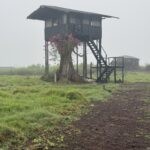
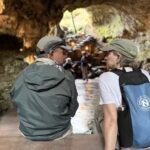
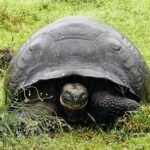
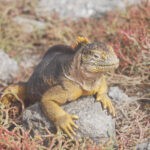
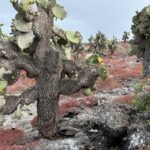
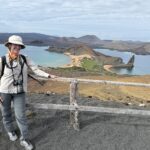


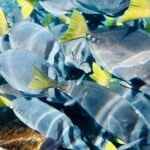
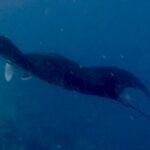

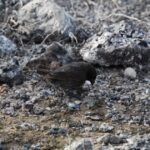
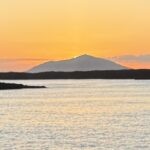
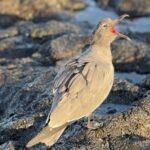
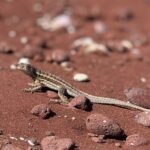


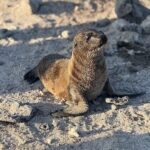
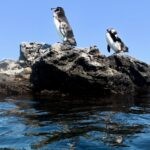
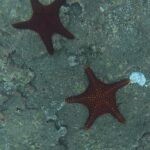



0 Comments